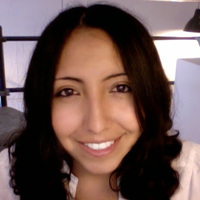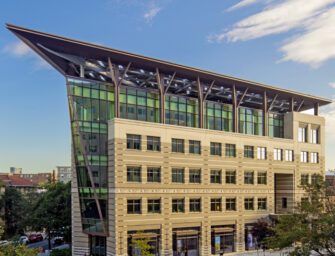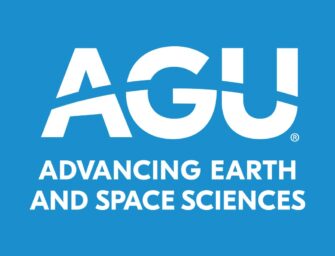“Eggos rock…Iggy Azalea rocks…IG-KNEE-US rocks?”- In Celebration of International Youth Day

Claudia Corona, Ph.D. candidate at University of Colorado at Boulder
When you’ve been a student for longer than you’ve been able to tie your shoes, and when you’ve been uttering words that would be considered a gem on a Scrabble board for at least a quarter of your life, you gain special powers of scientific enunciation and they should be used for good. That thought dawned on me two summers ago, when I was introducing the rock cycle and its respective rock types to a class of eight to ten year old kids at a Boys and Girls Club in San Francisco, CA.
I had recently graduated with a master’s in geosciences from San Francisco State University and I was considered Ph.D. programs versus starting a career in the private sector. As I considered my next step, I applied to a youth coordinator position at a local boys and girls club (BGC) in San Francisco with a high participation of disadvantaged youth. Having had the opportunity to be San Francisco State University’s 2016 graduate commencement speaker[1], I was determined to continue reaching out to disadvantaged youth to help foster their curiosity and confidence in pursuing science. The BGC would be a good first step.
At the BGC summer session, kids experienced a wonderfully diverse schedule with varying activities. I had proposed and been allowed to start a science lab where I encouraged kids to conduct science experiments. In one experiment, kids picked up Skittles with different utensils like plastic forks, knives, chopsticks and toothpicks, as an introduction to biological adaptation and evolution. In another experiment, kids created two-ingredient water bottle lava lamps and witnessed first-hand the laws of liquid density. In another, the gooey gak experiment, kids listened attentively to instructions to measure correctly (a good intro to the lab environment) in the hopes of succeeding at creating a slime putty that they could play with and take home.
In one of the last science labs we had, kids had the chance to study different rock types, enabling them to experience field/lab note-taking, critical analysis and asking questions. It was when I asked them to describe the rock cycle, that something special happened…
“Metamorphic rocks, sedimentary rocks, and eggos rocks,” one student said. “Almost,” I smirked. “Iggy Azalea[2] rocks?!” giggled some others. I chuckled, “Igneous rock”, to many blank stares. I looked at each of them, “when you say it, say it like this: IG – KNEE (pointing to my knee) – US (waving my hand in their and my direction) rocks”.
“IGGG-KNEEEEE-USSSS rocks!”, they repeated, laughing as they followed my example. I held up some pieces of pumice and obsidian. “These are both types of igneous rocks. In middle school and high school, you’ll have a chance to learn how they form and why. So…what kind of rocks are these?” “IG-KNEE-US rocks!”, they shouted excitedly, wonder in their eyes as I passed the rocks around for them to see, touch, and most importantly, wrap their minds around.
Since then, I have fondly thought back to how curious and excited these kids had been in the science lab. And I wonder if their curiosity will encourage them to be as excited about future STEM fields as they were in my class. I really hope so.
What is an igneous rock? My kids didn’t know the word existed, let alone understood anything about it. But in that moment, their honest wonder and excitement pushed their knowledge bounds and encouraged them to learn. We as scientists, have the tools to help foster more of those moments of scientific curiosity in our youth. Beyond textbooks, our ability to share knowledge and be approachable to kids in their own learning, is perhaps one of the most effective tools in communicating the beauty and power of science.
After all, we as scientists, are awesome walking human books of cool tricks and treats!
In honor then, of International Youth Day and with this experience in mind, I urge you to please take a moment to reach out to your local youth groups, especially our underrepresented and disadvantaged youth, and make yourself known. With the advent of email, a potential volunteering connection to a classroom may be but a few clicks away. Here are some ideas of things you could do this year in honor of International Youth Day:
- Reach out to teachers and ask to volunteer to teach a science classroom for an hour.
- Reach out to your local non-profit organization or after-school program (think LA’s Best, Boys and Girls Club, any outdoor youth group) and ask to be a guest scientist.
- Call/email elementary/middle/high schools and inquire about the possibility of being a chaperone for classes going to see science museums/planetariums/arboretums/you-name-it (I did this for a charter school system in southern California recently!).
- Volunteer at any middle school or high school to be a science fair judge, a career day speaker, or a human book for anyone that has questions about your field.
- Establish a connection with a science class about your research. Perhaps consider doing a “before/during/after” presentation about what you did, why it’s important, what you’ve learned and what you’re hoping to do moving forward.
Anything you do has the possibility to make a world of difference to a child. I continue to meet kids with infinite amounts of energy and curiosity who could really use some support and guidance in embracing their curiosity and funneling their energy into something as fascinating as the scientific method. There is so much potential out there, and as scientists, it is up to us to ensure that the geosciences community continues to evolve into a strong network of diverse voices. For in diversity lies the key to the challenges that we face today and will face tomorrow. I hope you will join me!
[1]Youtube Video: https://www.youtube.com/watch?v=DYI7SnOmcTk. Commencement speech begins around minute 45:00.
[2] Female rapper. Not very PG-13.



There are no comments
Add yours